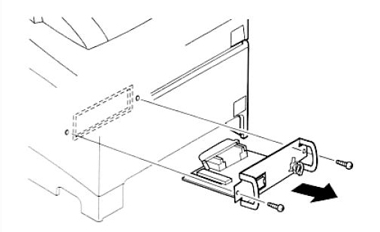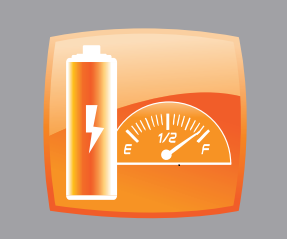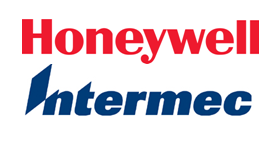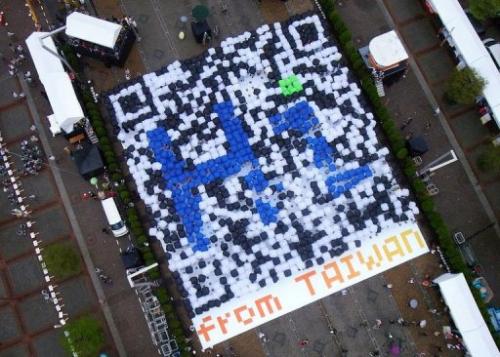Barcoding News
Data tracking news, product updates, tips, and more
Co-Creator Of The Barcode Dies
 The co-inventor of one of the most indispensable technologies of the 20th century that labels every retail product, the barcode, has died. The death of Norman Joseph Woodland, who was 91, was confirmed by his daughter, Susan Woodland. She said he died on Sunday in Edgewater, New Jersey, from the effects of Alzheimer’s disease and complications of advanced age.
The co-inventor of one of the most indispensable technologies of the 20th century that labels every retail product, the barcode, has died. The death of Norman Joseph Woodland, who was 91, was confirmed by his daughter, Susan Woodland. She said he died on Sunday in Edgewater, New Jersey, from the effects of Alzheimer’s disease and complications of advanced age.
Mr Woodland and Robert Silver were students at Philadelphia’s Drexel University when Mr Silver overheard a grocery store executive asking an administrator to support research on how product information could be captured at checkouts. The pair earned a patent in 1951 with Mr Woodland’s idea to create a shape of concentric circles. The technology did not catch on until the 1970s, when Mr Woodland’s employer IBM promoted a rectangular barcode that was adopted as the standard.
The barcode may have come from a humble beginning but has become the de facto means of tracking any kind of product or process today. Woodland’s innovation and contribution to the technology was crucial to improving businesses around the globe.
How Do I Change The Swappable Interface On My Star Printer?
 As a leading POS printer manufacturer, Star Micronics provides support for Serial, Parallel, USB, Powered USB, and Ethernet printing. We understand that systems, configuration, and POS software can change, which can result in a desired or necessary upgrade to POS hardware. Star printers have been affectionately coined by our customers as “Workhorses” because of their long operation lives and high reliability… Purchasing a new printer just to upgrade the interface is a costly and unnecessary expense to store and restaurant owners, which is why Star supports swappable interface connections for many of its models. This feature is especially convenient for users upgrading from old systems requiring serial interfaces to new systems that support USB or Ethernet connections.
As a leading POS printer manufacturer, Star Micronics provides support for Serial, Parallel, USB, Powered USB, and Ethernet printing. We understand that systems, configuration, and POS software can change, which can result in a desired or necessary upgrade to POS hardware. Star printers have been affectionately coined by our customers as “Workhorses” because of their long operation lives and high reliability… Purchasing a new printer just to upgrade the interface is a costly and unnecessary expense to store and restaurant owners, which is why Star supports swappable interface connections for many of its models. This feature is especially convenient for users upgrading from old systems requiring serial interfaces to new systems that support USB or Ethernet connections.
Powering Your Printer: What You Need to Know About Lithium-Ion Batteries
 Datamax-O’Neil printers are powered by lithium-ion batteries. Lithium-ion is the fastest growing battery chemistry type in the world. In less than two decades, it has progressed from the research and development domain to more widespread use, to the point that they are rapidly becoming the world’s most popular portable secondary battery chemistry. They’re the battery of choice in everything from cell phones and digital cameras to printers and portable PCs and tablets. Lithium-ion batteries are a family of rechargeable batteries in which lithium ions move from the negative electrode to the positive electrode when discharging, and in the opposite direction when charging. They have been referred to as “rocking chair batteries” because of the back-and-forth ionic action during charge and discharge.
Datamax-O’Neil printers are powered by lithium-ion batteries. Lithium-ion is the fastest growing battery chemistry type in the world. In less than two decades, it has progressed from the research and development domain to more widespread use, to the point that they are rapidly becoming the world’s most popular portable secondary battery chemistry. They’re the battery of choice in everything from cell phones and digital cameras to printers and portable PCs and tablets. Lithium-ion batteries are a family of rechargeable batteries in which lithium ions move from the negative electrode to the positive electrode when discharging, and in the opposite direction when charging. They have been referred to as “rocking chair batteries” because of the back-and-forth ionic action during charge and discharge.
Chemistry, performance, cost, and safety characteristics vary across lithium-ion battery types. Unlike disposable lithium primary batteries, lithium-ion electrochemical cells use an intercalated lithium compound as the electrode material instead of metallic lithium. The positive electrode material is typically a metal oxide with a layered structure, such as lithium cobalt oxide (LiCoO2), or a material with a tunneled structure, such as lithium manganese oxide (LiMn2O4), on a current collector of aluminum foil. The negative electrode material is typically a graphitic carbon (also a layered material) on a copper current collector. In the charge/discharge process, lithium ions are inserted or extracted from interstitial space between atomic layers within the active materials.
Continue reading »
The Datalogic Skorpio Comes To An End: Obsolescence and Replacement Notice

After many years of exceptional success and results, Datalogic is now announcing the worldwide obsolescence of the former Skorpio mobile computer product line, due to electronic component availability. This will apply to all special versions of the Skorpio mobile computer as well.
Product Replacement Recommendation
The new Skorpio X3 rugged mobile computer by Datalogic represents innovation. From its 3.2 inch color touch screen to its inclined scan engine, the latest advances in technology and engineering are found in this compact and ergonomic solution for data collection needs.
The Skorpio X3 mobile computer was designed with retail environments in mind, both on the show room floor and in the back office. It offers the largest high-visibility color graphic display (3.2 inch) with touch screen in its class. This, combined with its specially crafted ergonomic casing, increases the viewing area in an extremely compact form factor, while its trendy design, compact size and light weight provide excellent balance and superior handling. The Skorpio X3 also resists shocks, tumbles and multiple drops from 1.5 m / 5.0 ft, guaranteeing reliable performance with every scan.
Intermec To Be Acquired by Honeywell
 Intermec, a leading provider of mobile data collection hardware and information management solutions, announced a definitive agreement under which Honeywell International Inc, a diversified technology and manufacturing leader, will acquire Intermec for $10.00 per share in an all-cash transaction valued at approximately $600 million, net of cash and debt acquired. Businesses around the world increasingly require more robust asset tracking and data capture applications and the combined entity will be a technology and information management solutions leader in the Auto Identification and Data Capture (AIDC) industry.
Intermec, a leading provider of mobile data collection hardware and information management solutions, announced a definitive agreement under which Honeywell International Inc, a diversified technology and manufacturing leader, will acquire Intermec for $10.00 per share in an all-cash transaction valued at approximately $600 million, net of cash and debt acquired. Businesses around the world increasingly require more robust asset tracking and data capture applications and the combined entity will be a technology and information management solutions leader in the Auto Identification and Data Capture (AIDC) industry.
1,300 Taiwanese Form Human QR Barcode
 More than 1,300 Taiwanese people formed a human QR code in an event designed to promote the island to the world by cashing in on the rising use of smartphones which can read the barcodes. QR codes are commonly used to direct users to websites, videos or social media sites.
More than 1,300 Taiwanese people formed a human QR code in an event designed to promote the island to the world by cashing in on the rising use of smartphones which can read the barcodes. QR codes are commonly used to direct users to websites, videos or social media sites.
Forming the QR code, highlighted by a blue word “Hi” in the middle, involved a total of 1,369 people carrying umbrellas on the square of the Taipei City Hall, organizers said.
Direct to Card vs. Retransfer Print Technology
 Direct-to-Card (DTC) printing is the most common technology used by desktop card printer/encoders to transfer images directly onto a plastic ID card. DTC technology prints images by heating a print ribbon beneath a thermal printhead, resulting in the transfer of color from the ribbon to a blank card. With DTC printing, images have sharp edges, deep blacks and a full spectrum of colors. This printing method does not provide full card coverage as a small white border will be at the edges of the card. All major manufacturers produce DTC ID card Printers, with some of most popular models being Zebra ZXP Series 3, Datacard SD360, Fargo DTC1000, and Evolis Primacy.
Direct-to-Card (DTC) printing is the most common technology used by desktop card printer/encoders to transfer images directly onto a plastic ID card. DTC technology prints images by heating a print ribbon beneath a thermal printhead, resulting in the transfer of color from the ribbon to a blank card. With DTC printing, images have sharp edges, deep blacks and a full spectrum of colors. This printing method does not provide full card coverage as a small white border will be at the edges of the card. All major manufacturers produce DTC ID card Printers, with some of most popular models being Zebra ZXP Series 3, Datacard SD360, Fargo DTC1000, and Evolis Primacy.
Retransfer printing is a two-step process that transfers your image to a retransfer film before applying it to the card. First, the image is printed in reverse directly onto a clear layer of film. Next, the printhead heats up and bonds the imaged film to the card’s surface by applying heat and pressure. The two step retransfer process creates a true edge to edge (100% card coverage) high quality image on PVC cards and other card types. High end models using this technology include Zebra ZXP Series 8 and Fargo HDP5000. Remember, when using a retransfer printer; don’t forget to add the retransfer film with your ribbon.
For help finding the right ID Card Printer for your business, contact us at Barcodes Inc.
Datamax-O’Neil Extends the microFlash/PrintPAD Series Printhead Warranty to Two Years
Datamax-O’Neil, which is the only thermal portable receipt printer manufacturer to stand behind its claims of ruggedness and durability by offering a full 2-year warranty on its microFlash and PrintPAD series printers, is now extending the 2-year warranty to the printheads as well. This warranty is four times longer than competing printers. The table below provides the warranty comparisons:
Datamax-O’Neil will extend the original printhead warranty on new microFlash and PrintPAD printers from 1 year to 2 years effective December 1st, 2012 through December 31st, 2013.
The Honeywell Marathon: Made For The Field
Putting powerful computing tools into the hands of your field workers is one the most effective tools to empower greater efficiency in their daily tasks. While smartphones and tablets may be common place in the consumer and retail realm, these devices were never made to handle the rigors of daily field use. This is where rugged mobile devices, like Honeywell’s Marathon Field Computer, are designed with outdoor AIDC applications in mind.
In this video, Honeywell Product Manager Keith Bernhardt explains how customers can take the Marathon Field Computer — with its rugged design, ergonomic tablet form factor, and full keyboard — “up-the-pole, down-the-hole” into the most demanding outdoor data capture environments
Introducing The New Datalogic Lynx PDA

Datalogic has announced their new pocketable Lynx PDA. The Lynx PDA is part of a family of full-featured, ruggedized PDA’s. This new product combines the knowledge and experience gained from all its predecessors with a very compact size and superior ergonomics.
Today’s store managers need to always be connected to their network and able to access any kind of information related to goods needed by customers. They must always be available through a voice connection. Managers are looking for a single product, which is robust and reliable, to provide all these features in a small and pocketable PDA form factor. This describes the Lynx PDA, offering a secure connection through an 802.11 b/g/n radio that is Cisco CCX v4 certified, perfect for all the latest Wi-Fi infrastructures. The Lynx PDA has a vibrant display which is the ideal size for displaying all the information needed, leaving the product size as small as possible. Powered with a new technology that improves outdoor readability, the Lynx PDA is perfect in any environment, including interior or exterior usage.





